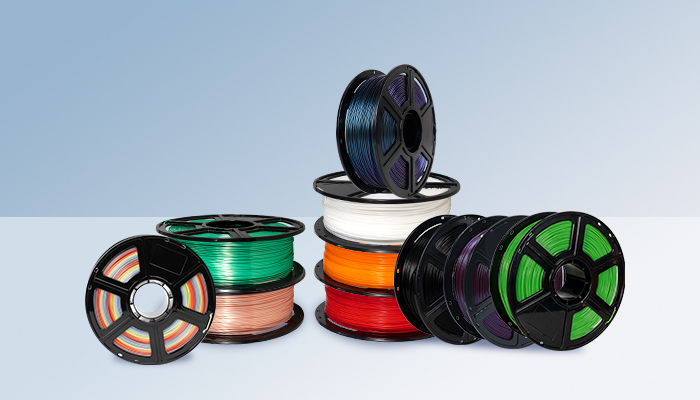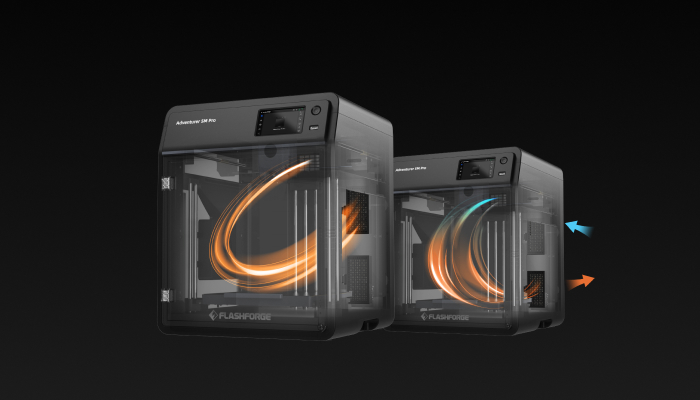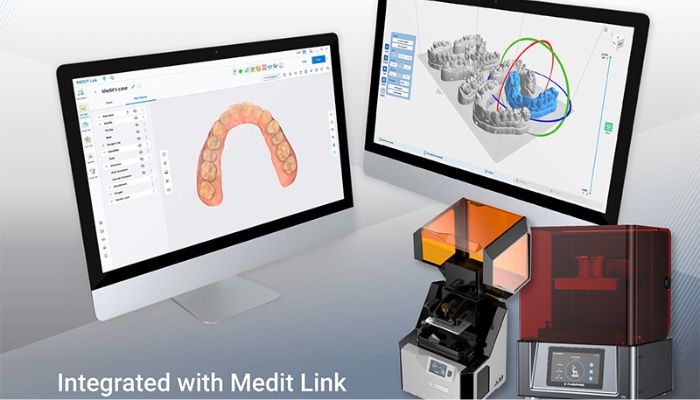Introduction
In recent years, the world of manufacturing and innovation has been reshaped by the remarkable progress in 3D printing technology. This article delves into the fascinating journey of 3D Printing, its diverse applications, and its profound impact on numerous industries.
The concept of 3D Printing, also known as additive manufacturing, dates back to the 1980s. It has since come a long way from its humble beginnings. Early 3D printers were large, costly, and had limited capabilities. However, technological advancements have led to more accessible and versatile machines, making 3D Printing a household name.
Types of 3D Printing Technologies
There are several different types of 3D printing technologies, each with its unique approach to creating three-dimensional objects. Here are some of the most common 3D printing technologies:
Fused Deposition Modeling (FDM)
FDM is one of the most popular 3D printing technologies. It works by extruding thermoplastic filament layer by layer to create an object. Common materials used in FDM printing include PLA and ABS. Flashforge provides various types of FDM 3D printers for beginners and 3D printing hobbyists, such as Adventurer 5M Pro (AD5MP) and Adventurer 5M (AD5M) 3D printers.
Stereolithography (SLA)
SLA uses a liquid photopolymer resin cured (solidified) by a UV laser or other light source. It creates highly detailed and smooth objects and is commonly used in jewelry and dental modeling applications.
Digital Light Processing (DLP)
DLP is similar to SLA but simultaneously uses a digital light projector to cure an entire resin layer. It can be faster than SLA and is also used for high-resolution prints.
Selective Laser Sintering (SLS)
SLS uses a high-powered laser to sinter (fuse) powdered materials, such as nylon, into solid layers. It's known for producing strong and functional parts and is often used in industrial applications.
Selective Laser Melting (SLM)
SLM is similar to SLS but operates at higher temperatures. It melts metal powders, typically used for producing high-strength metal parts.
Electron Beam Melting (EBM)
EBM is another metal 3D printing technology that uses an electron beam to melt metal powder in a vacuum, leading to substantial and dense metal parts.
Binder Jetting
Binder jetting involves selectively depositing a liquid binding agent onto a powder bed. This process is often used for producing full-color parts and large objects.
Material Jetting
Material jetting uses multiple print heads to deposit and cure droplets of photopolymer materials. It's capable of producing high-resolution and multicolor objects.
Laminated Object Manufacturing (LOM)
LOM builds objects by layering and bonding sheets of material (usually paper or plastic) together and then cutting the desired shape using a laser or a knife.
Direct Energy Deposition (DED)
DED involves the deposition of material, often powder or wire, through a nozzle that is melted by a high-energy source, typically a laser or electron beam. It is used for repairing and adding material to existing parts.
Continuous Liquid Interface Production (CLIP)
CLIP technology uses a liquid resin and a continuous oxygen-permeable window to create objects without distinct layers, resulting in faster and smoother prints.
These are some of the major 3D printing technologies available, each with strengths and applications. The choice of technology depends on factors such as material requirements, precision, speed, and the intended use of the 3D-printed objects.
Materials in 3D Printing
3D printing materials are essential components in the additive manufacturing process, and they play a crucial role in determining the properties and applications of 3D-printed objects. The choice of materials for 3D Printing has expanded considerably. Initially limited to plastics, 3D printers can now work with metals, ceramics, and biodegradable substances. This diversity enables the creation of intricate and functional objects.
There is a wide variety of materials available for 3D Printing, and they can be broadly categorized into the following groups:
Thermoplastics
- PLA (Polylactic Acid): PLA is one of the most popular 3D printing materials. It's easy to work with and suitable for various applications. It's biodegradable and comes in various colors.
- ABS (Acrylonitrile Butadiene Styrene): ABS is known for its strength and durability. It's commonly used for functional prototypes and parts but requires a heated print bed due to its tendency to warp.
Thermosetting Polymers
Resins (for SLA and DLP): UV or other light sources cure these liquid photopolymer materials. They offer excellent detail and a smooth surface finish. Resins come in different types, including standard, flexible, and challenging.
- Nylon: Nylon filaments are known for their strength and flexibility. They are used in various applications, including mechanical parts and functional prototypes.
- Polycarbonate: Polycarbonate is a robust, heat-resistant material used for parts requiring high-temperature stability and impact resistance.
- PETG (Polyethylene Terephthalate Glycol): PETG is a challenging and durable material commonly used in 3D Printing. It has good chemical resistance and is suitable for various applications.
- TPE (Thermoplastic Elastomer) and TPU (Thermoplastic Polyurethane): These flexible filament materials are used for making soft, rubber-like objects and are often used in applications like phone cases and shoe soles.
- Metal Alloys: Various metal powders, such as aluminum, titanium, and stainless steel, are used in metal 3D printing technologies like SLS, SLM, and EBM. They are employed in the aerospace, automotive, and medical industries.
- Ceramics: Ceramic 3D Printing involves materials like alumina and zirconia, which create objects with high-temperature resistance and electrical insulating properties.
- Wood Filaments: These materials combine a PLA base with wood fibers, allowing you to create 3D-printed objects with a wood-like appearance and texture.
- Biodegradable and Sustainable Materials: Some 3D printing materials, like bioPLA and hemp-based filaments, are eco-friendly and biodegradable, making them suitable for environmentally conscious applications.
- Carbon Fiber-Infused Filaments: These materials combine thermoplastics with carbon fiber, resulting in 3D-printed parts with increased strength and stiffness.
- PVA (Polyvinyl Alcohol): PVA is often used as a support material in dual-extrusion 3D Printing because it is water-soluble, making it easy to remove from complex designs.
- Composite Materials: Composites mix two or more types of materials to achieve specific properties. For example, carbon fiber composites are used for lightweight, vital components.
The choice of material for 3D Printing depends on the application, desired properties, and the specific 3D printing technology used. Selecting the suitable material to achieve the desired results, whether creating prototypes, functional parts, or artistic objects, is essential.

Applications in Various Industries
3D Printing's versatility has opened doors to various industries. From rapid prototyping in engineering to custom prosthetics in healthcare, it has revolutionized how businesses operate. The fashion, jewelry, and architectural sectors have also embraced the technology.
The Medical Marvels of 3D Printing
3D Printing has revolutionized various sectors, including the medical field. Here are some of the medical marvels of 3D Printing:
- Prosthetics: 3D Printing has made the production of custom prosthetics possible. These are more comfortable for the patient as they are tailored to fit perfectly.
- Bioprinting: This is a method of 3D Printing with cells, bioinks, and biomaterials to fabricate biomedical parts that maximally imitate natural tissue characteristics. This technology has the potential to replace damaged or diseased organs.
- Dental Applications: 3D Printing has enabled dentists to produce crowns, bridges, stone models, and a range of orthodontic appliances precisely and efficiently.
- Surgical Tools: Custom surgical tools can be 3D printed for specific operations. They are more affordable and can be made faster compared to traditional methods.
- Medical Models: 3D Printing can produce exact replicas of patients' body parts that surgeons can use to plan and practice procedures. This can lead to more successful outcomes.
- Customized implants can fit a patient's unique anatomy, leading to better integration with the body and fewer complications.
- Drug delivery devices: 3D Printing allows for creation of complex geometries, enabling the development of drug delivery devices that can release drugs at a controlled rate.
- Hearing aids: The entire shell of a hearing aid can now be 3D printed, which has reduced manufacturing time and allows for a comfortable, customized fit.
- Personal protective equipment: During the COVID-19 pandemic, 3D Printing was used to produce personal protective equipment for healthcare workers when there were shortages.
- Tissue engineering: 3D bioprinting is used to create artificial tissues that can be used for testing drugs and could be used to repair damaged tissues in the body.
3D Printing holds a promising future in medicine, potentially increasing the quality of patient care and decreasing medical costs.
3D Printing in Aerospace
3D Printing also plays a significant role in the aerospace industry. Here's how it has been applied:
- Prototyping: 3D Printing is a cost-effective and efficient method for creating prototypes. It allows aerospace engineers to create and test designs without expensive tooling or machinery.
- Manufacturing: 3D Printing can manufacture complex components that would be difficult or impossible to create using traditional methods. For example, GE Aviation has used 3D Printing to create fuel nozzles for jet engines that are lighter and more durable than those made using traditional methods.
- Customization: With 3D Printing, aerospace companies can create bespoke parts for specific aircraft or spacecraft. This can be particularly useful for creating components for older aircraft no longer in production.
- Reduced Waste: Traditional methods of manufacturing often involve cutting away excess material, resulting in a lot of waste. With 3D Printing, material is only added where needed, reducing waste.
- On-Demand Production: 3D Printing allows for parts to be produced on demand rather than in large batches. This can reduce storage costs and make supply chains more efficient.
- In-Space Manufacturing: ASA and other space agencies are exploring using 3D Printing for in-space manufacturing. This could allow parts to be created in space rather than launched from Earth.
While 3D Printing offers many benefits, there are also challenges to its use in aerospace. These include the need for high-quality materials, the slow speed of 3D Printing compared to traditional manufacturing methods, and the need for post-processing and inspection of printed parts. However, as technology continues to advance, the use of 3D Printing in aerospace will continue to grow.
Automotive Advancements and 3D Printing
In recent years, the automotive industry has seen significant advancements, and one of the key technologies driving these changes is 3D Printing. 3D Printing has revolutionized how vehicles are designed, prototyped, and manufactured. Here are some of the ways 3D Printing is contributing to automotive progress:
- Prototyping and Design: 3D Printing allows automotive engineers to prototype and test various components and designs rapidly. This technology enables them to quickly create physical prototypes of parts, such as engine components, interiors, and exterior panels, helping to speed up the design iteration process.
- Lightweighting: Automotive manufacturers increasingly use 3D Printing to produce lightweight components and structures. This is particularly important for electric vehicles (EVs), where reducing weight can extend the range and improve efficiency. 3D Printing enables the creation of complex geometries that are impossible with traditional manufacturing methods.
- Customization: Customization is a growing trend in the automotive industry, and 3D Printing is making it easier to offer personalized vehicles. Customers can select unique interior trims and personalized badges or even design their custom parts, which can be 3D printed to order.
- Spare Parts Production: 3D Printing transforms how automotive companies manage their supply chains for spare parts. Instead of maintaining extensive inventories of spare parts, manufacturers can 3D print components on demand, reducing storage costs and lead times. This mainly benefits vintage cars or rare models where traditional replacement parts may be hard to find.
- Tooling and Manufacturing Aids: 3D Printing is used for producing vehicle components and creating custom tooling and manufacturing aids. This can include jigs, fixtures, and assembly line tools tailored to a production process's specific needs. It streamlines manufacturing and reduces costs.
- Complex Geometries: 3D Printing allows for the creation of complex and highly optimized structures. This is advantageous for producing components like heat exchangers, exhaust manifolds, and air intakes, where intricate designs can significantly improve performance.
- Electric Vehicle (EV) Advancements: The transition to electric vehicles presents new challenges in terms of powertrain design. 3D Printing can produce specialized components for EVs, such as motor housings and battery pack components, which must be both lightweight and thermally efficient.
- Sustainability: 3D Printing can be a more sustainable manufacturing method than traditional techniques, as it often generates less waste and can use recycled materials. This aligns with the increasing focus on sustainability in the automotive industry.
- Rapid Prototyping for Autonomous Vehicles: The development of autonomous vehicles requires extensive testing and prototyping. 3D Printing accelerates the creation of custom sensor mounts, brackets, and other test equipment, helping to advance autonomous vehicle technology.
3D Printing plays a pivotal role in the ongoing evolution of the automotive industry. It improves efficiency, enables customization, and contributes to developing more sustainable and advanced vehicles. As this technology continues to mature, we can expect even more groundbreaking innovations in the automotive sector.
Consumer Products and 3D Printing
3D Printing has transformed the consumer products industry, offering new possibilities for design, customization, and rapid production. This technology is reshaping the way consumer products are conceived, created, and delivered to consumers. Here are some key ways 3D Printing is influencing the consumer products sector:
- Customization: One of the most significant advantages of 3D Printing in the consumer products industry is the ability to offer highly personalized and customized products. Customers can have input into the design, color, size, and other features of the items they purchase, whether it's clothing, jewelry, footwear, or home decor. This personalization can lead to increased customer satisfaction and loyalty.
- Prototyping and Design Iteration: Product designers and inventors can rapidly create prototypes and iterate on their designs, reducing the time and cost of bringing a new product to market. This mainly benefits small businesses and startups needing access to traditional manufacturing facilities.
- Short-Run Production: 3D Printing enables cost-effective short-run and on-demand production, eliminating the need for large, expensive production runs. This makes it easier for businesses to introduce new products or test the market with limited quantities.
- Spare Parts and Repairs: Consumers can use 3D Printing to create replacement parts for various products, extending the lifespan of items that would otherwise be discarded. This is especially valuable for items no longer in production or rare and vintage products.
- Unique Art and Collectibles: Artists and collectors use 3D Printing to produce unique sculptures, art pieces, and collectibles. It allows for creating intricate and one-of-a-kind items that were previously challenging or impossible to make using traditional methods.
- Home Decor and Furniture: 3D Printing is making its way into home decor and furniture production. Consumers can order custom-designed furniture pieces, lighting fixtures, and home accessories that perfectly match their interior spaces.
- Footwear and Apparel: The fashion industry is utilizing 3D Printing to create customized footwear and apparel. Consumers can have shoes tailored to the shape of their feet or garments designed to their exact measurements, enhancing comfort and fit.
- Personal Electronics: 3D Printing can produce unique phone cases, headphone stands, and other personal electronics accessories. This allows consumers to express their style and preferences through their gadgets.
- Dental and Healthcare Products: 3D Printing is increasingly applied to creating custom dental implants, orthodontic devices, hearing aids, and prosthetics, ensuring a perfect fit and comfort for each patient.
- Home Improvement: Consumers can 3D print replacement parts for household appliances, tools, and home improvement products. This DIY approach simplifies repairs and reduces waste.
- Educational Tools: 3D Printing is becoming a valuable educational tool, allowing students to learn about design, engineering, and manufacturing by creating tangible objects.
- Eco-Friendly Products: Some companies use sustainable materials and 3D Printing to produce eco-friendly consumer products with minimal waste and environmental impact.
3D Printing is transforming the consumer products industry by offering new opportunities for customization, innovation, and sustainability. As technology advances, we can expect even more exciting and diverse applications in this sector, with consumers benefiting from more excellent choices and tailored products.
3D Printing in Education
3D Printing has gained significant popularity in education, transforming how students learn and educators teach. This innovative technology is being used at various levels of education, from primary schools to universities, to enhance learning experiences in various subjects. Here are some key ways 3D Printing is making an impact in education:
- Hands-On Learning: 3D Printing provides students with a hands-on learning experience. It allows them to create physical objects from digital designs, fostering a deeper understanding of abstract concepts and theoretical knowledge in mathematics, science, and engineering.
- STEAM Education: 3D Printing is well-suited for STEAM (Science, Technology, Engineering, Arts, and Mathematics) education. Students can design and print their projects, combining creativity with technical skills. This interdisciplinary approach encourages critical thinking and problem-solving.
- Prototyping: In engineering and design courses, 3D Printing enables students to create prototypes of their inventions and designs quickly and cost-effectively. This iterative process helps refine their ideas and prepare them for real-world applications.
- Anatomy and Biology: Medical and biology students can benefit from 3D-printed anatomical models that visually represent complex structures, making understanding human anatomy and various biological processes easier.
- Historical and Archaeological Reproductions: History and archaeology students can study ancient artifacts, historical landmarks, and archaeological findings through 3D-printed replicas. This brings history and archaeology to life and aids in preservation efforts.
- Geography and Geography Models: 3D Printing can create detailed topographical maps, geographical models, and globes that enhance geography and geology education, helping students visualize landscapes and geographic features.
- Art and Design: Art and design students can use 3D Printing to turn their digital designs into physical sculptures, jewelry, and art pieces. It opens up new possibilities for creative expression.
- Special Education: 3D Printing can be a valuable tool for students with disabilities, creating customized tactile learning aids and assistive devices, such as Braille labels, tactile graphics, and mobility aids.
- Robotics and Electronics: Robotics and electronics enthusiasts can print their projects' components, frames, and casings. This hands-on approach helps students understand the mechanics and assembly of robotics and electronic devices.
- Environmental Awareness: Students can use 3D Printing to create models and prototypes of environmental solutions, such as renewable energy devices or sustainable architecture, promoting eco-friendly practices.
- Entrepreneurship: 3D Printing fosters entrepreneurial skills by allowing students to design, produce, and market their products. This hands-on experience can empower students to explore entrepreneurship and innovation.
- Open-Source Resources: The open-source nature of many 3D printing projects and resources promotes collaboration and sharing among students and educators, enabling a community of learners to develop and exchange ideas.
3D Printing is revolutionizing education by offering a dynamic and interactive approach to learning. It empowers students to explore, experiment, and create, enhancing their understanding of various subjects and preparing them for a future that increasingly relies on technology and innovation. As 3D printing technology advances, its role in education will grow even further.
The Role of AI in 3D Printing
Artificial Intelligence (AI) is playing an increasingly significant role in advancing the capabilities and efficiency of 3D printing technology. Here are some key ways in which AI is contributing to the field of 3D Printing:
- Design Optimization: AI algorithms can analyze complex data to optimize 3D-printed designs. AI can generate functional and efficient designs by considering factors like material usage, structural integrity, and weight reduction. These optimized designs can produce lighter, stronger, and more resource-efficient components.
- Generative Design: Generative design, powered by AI, creates design options based on user-defined parameters. AI algorithms can generate multiple design iterations, allowing engineers and designers to explore innovative and often unconventional solutions that might not have been considered otherwise. This approach is precious for complex components and customized products.
- Quality Control: AI is used for real-time quality control in 3D printing processes. Machine learning models can monitor the printing process, detect defects or deviations from the desired outcome, and make immediate adjustments to ensure the final product meets quality standards. This reduces waste and the need for post-processing.
- Predictive Maintenance: AI can predict when 3D printers need maintenance or when specific components will likely fail. By analyzing sensor data and historical performance, AI algorithms can proactively schedule maintenance, minimizing downtime and ensuring consistent print quality.
- Material Selection: AI helps select the most appropriate materials for a given 3D printing project. It considers material properties, cost, and end-use requirements to make informed recommendations. This is particularly beneficial for industries where material selection is critical, such as aerospace and healthcare.
- Slicing and Toolpath Optimization: Slicing software, which converts 3D models into printable instructions, can be enhanced with AI. AI algorithms can optimize toolpaths, reduce print time, and minimize support structures, leading to more efficient and cost-effective 3D Printing.
- Post-Processing: AI automates and improves post-processing tasks, such as removing support structures, sanding, and painting. Computer vision systems powered by AI can identify the areas that require post-processing and execute the necessary steps.
- Supply Chain and Inventory Management: AI can help optimize the supply chain for 3D Printing. It can monitor inventory levels, predict demand, and enable just-in-time production, reducing storage costs and waste.
- Design Assistance and Feedback: AI can assist designers and engineers by providing real-time feedback on design choices, suggesting improvements, and even offering design alternatives that can be 3D printed more efficiently or with better performance.
- Personalization and Customization: AI-driven algorithms can facilitate personalized product design and mass customization. AI can generate 3D-printable designs tailored to individual customers' needs by analyzing user preferences and requirements.
- Collaborative Design: AI can enable collaborative design projects, where multiple individuals or teams work on a 3D printing project simultaneously, with AI assisting in design integration and conflict resolution.
AI is enhancing the capabilities and efficiency of 3D printing technology across various aspects of the process, from design optimization and quality control to material selection and post-processing. This synergy between AI and 3D Printing drives innovation and expands the possibilities of additive manufacturing in various industries. As AI continues to evolve, its role in 3D Printing is likely to become even more central to the development of this transformative technology.
Conclusion
As mentioned above, the advancements in 3D printing technology have created a revolution across multiple sectors, making the impossible possible. As technology evolves, it promises to shape a brighter, more innovative future.
Flashforge 3D Printing
FlashForge is a well-known manufacturer of 3D printers and related products. We specialize in producing a range of 3D printers, filaments, and accessories designed for professionals and hobbyists. FlashForge is recognized for its user-friendly and cost-effective 3D printing solutions.
FlashForge has gained a reputation for providing reliable 3D printing solutions, and our products continue to be a popular choice for individuals and businesses looking to leverage the benefits of 3D printing technology. Researching specific models and comparing their features is essential to finding the FlashForge printer that best suits your needs and budget.










